Is it a native?
Spike-rushes - native (Eleocharis species)
Family: Cyperaceae (Sedge family). There are at least 3 species.
Common Spike-rush - native (Eleocharis acuta)
Occurrence: Widespread on swamps and lake edges.
Native to Australia, NZ and New Guinea.
Identification:
- it is has hollow stems, to a few mm thick
- it grows to about 50cm high, but is usually less
- the flowers form a more or less cylindrical cluster at the ends of the stems.
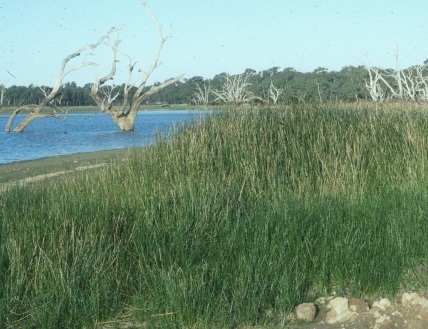
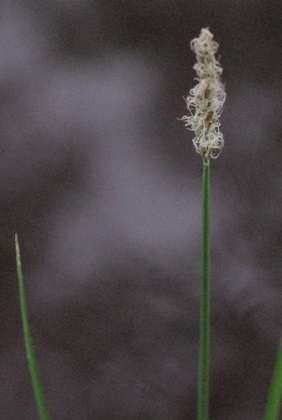
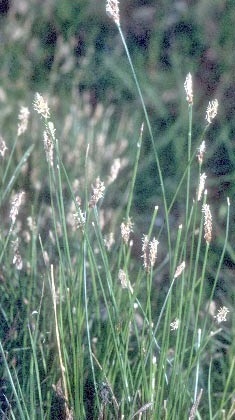
1: Spike-rush flowers. Harcourt North. 2: Flower cluster. The name "spike" refers to the flower arrangement, in that the flowers are stalkless and attached diretly to the stems.
3: Dense Spike-rush, Lake Eppalock.
3: Dense Spike-rush, Lake Eppalock.

Tall Spike-rush (Eleocharis sphacelata)
Occurrence: Grows in water up to 5 metres deep.
Native to Australia and New Guinea.
Identification:
- the stems are hollow and about finger-width thickness
- the flowers are in a terminal cylinder.
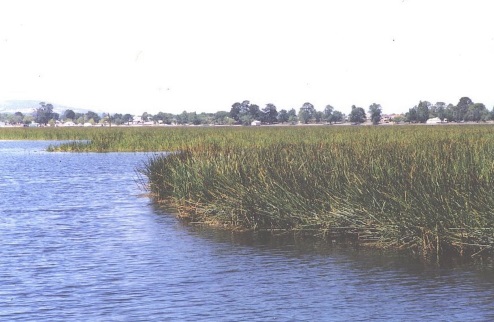
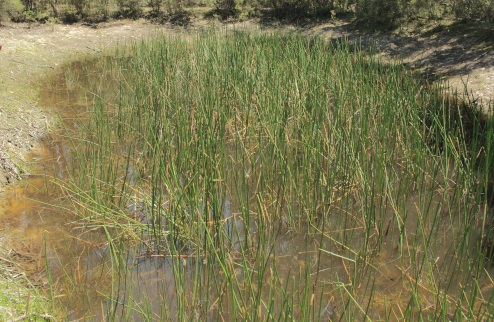
1: The cylindrical flower cluster. Fryers Ridge.
2: Dense Tall Spike-rush. Lake Wendouree.
3: Tall Spike-rush growing in a wet depression. Enfield.
2: Dense Tall Spike-rush. Lake Wendouree.
3: Tall Spike-rush growing in a wet depression. Enfield.
Small Spike-rush - native (Eleocharis pusilla)
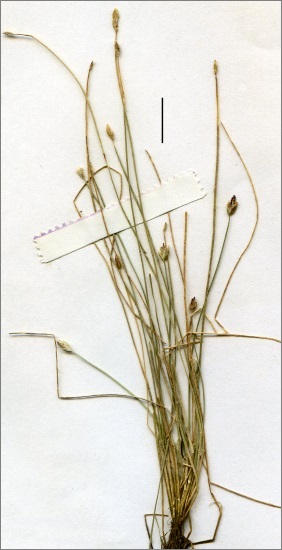
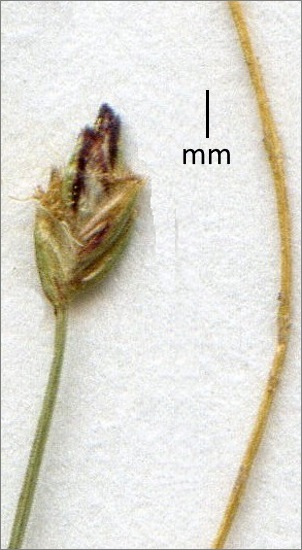
Native to Australia and New Zealand.
Scattered.
Occurrence: Damp areas e.g. at the edge of reservoirs.
Identification: It is a small spike-rush with very narrow stalks and usually growing to less than 15cm. Size alone is not sufficient for identification, as Common Spike-rush can have a similar size in hard conditions. Good magnification is needed to see flower details. However in general
- it grows to about 15cm, but often less
- the stalks are narrow, about 0.5mm wide, with very slender leaves
- the flower cluster is egg-shaped and 2-7mm long
- the leaf sheaths are thin-textured (membranous) and the mouth (the junction of the leaf and the sheath) is oblique and usually loose.
1: Flower enlargement. 2: Pressed specimen. Moolort.